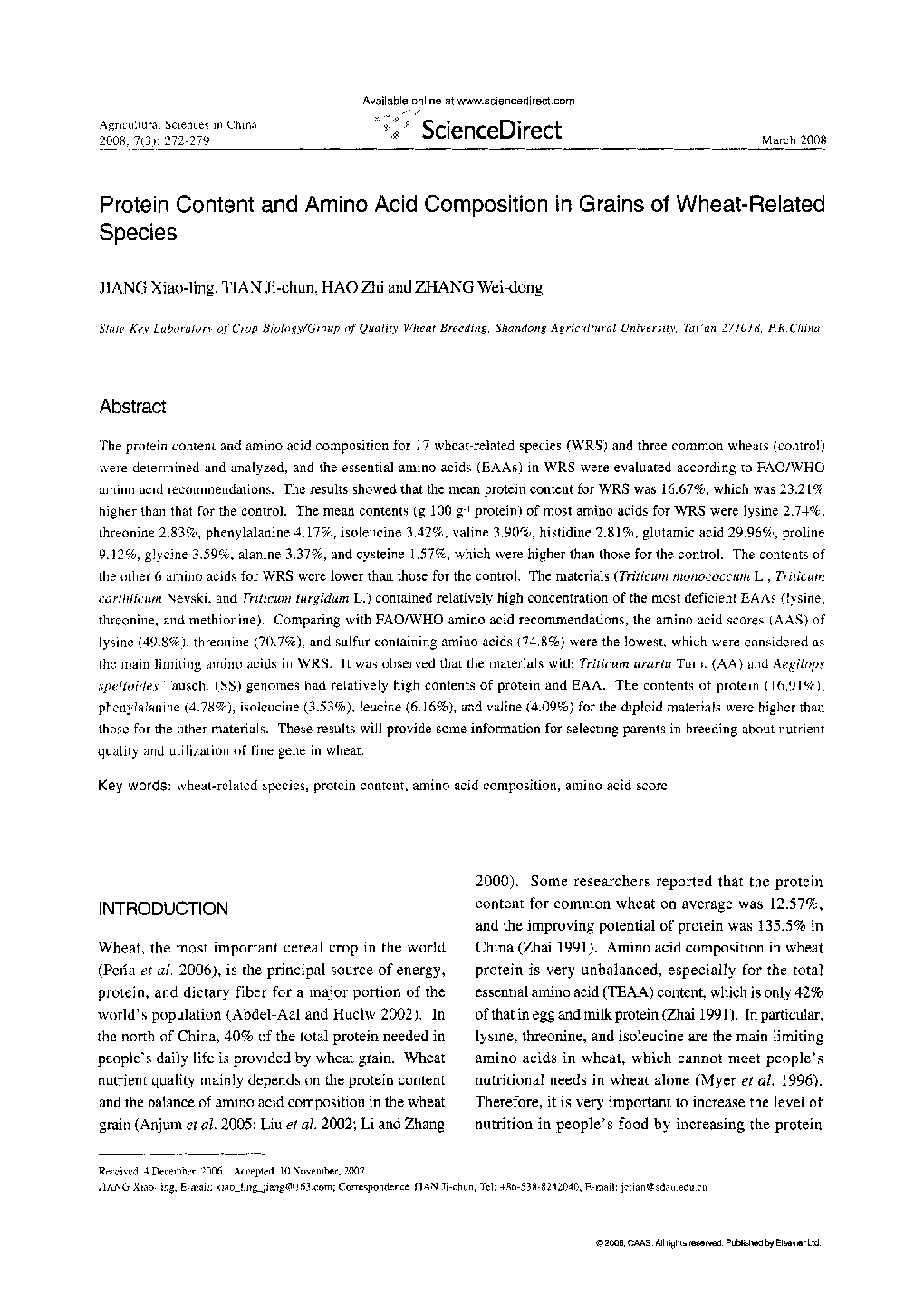| Article ID | Journal | Published Year | Pages | File Type |
|---|---|---|---|---|
| 4490600 | Agricultural Sciences in China | 2008 | 8 Pages |
The protein content and amino acid composition for 17 wheat-related species (WRS) and three common wheats (control) were determined and analyzed, and the essential amino acids (EAAs) in WRS were evaluated according to FAO/WHO amino acid recommendations. The results showed that the mean protein content for WRS was 16.67%, which was 23.21% higher than that for the control. The mean contents (g 100 g−1 protein) of most amino acids for WRS were lysine 2.74%, threonine 2.83%, phenylalanine 4.17%, isoleucine 3.42%, valine 3.90%, histidine 2.81%, glutamic acid 29.96%, proline 9.12%, glycine 3.59%, alanine 3.37%, and cysteine 1.57%, which were higher than those for the control. The contents of the other 6 amino acids for WRS were lower than those for the control. The materials (Triticum monococcum L., Triticum carthlicum Nevski, and Triticum turgidum L.) contained relatively high concentration of the most deficient EAAs (lysine, threonine, and methionine). Comparing with FAO/WHO amino acid recommendations, the amino acid scores (AAS) of lysine (49.8%), threonine (70.7%). and sulfur-containing amino acids (74.8%) were the lowest, which were considered as the main limiting amino acids in WRS. It was observed that the materials with Triticum urartu Tum. (AA) and Aegilops speltoides Tausch. (SS) genomes had relatively high contents of protein and EAA. The contents of protein (16.91%), phenylalanine (4.78%), isoleucine (3.53%), leucine (6.16%), and valine (4.09%) for the diploid materials were higher than those for the other materials. These results will provide some information for selecting parents in breeding about nutrient quality and utilization of fine gene in wheat.
